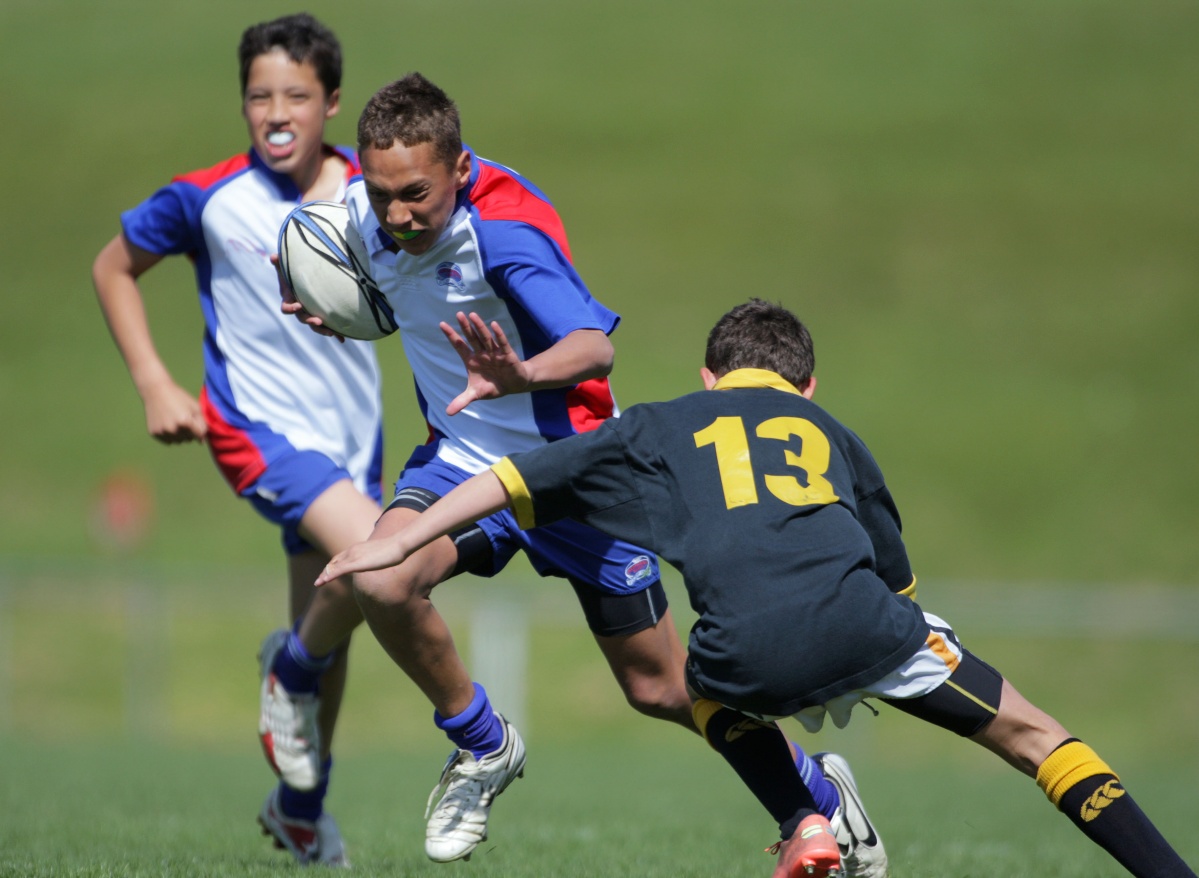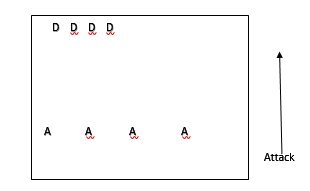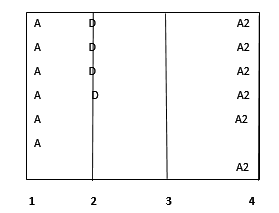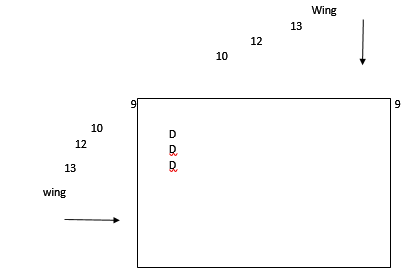- Rugby Toolbox
- Resources & Education
- Learn more
- Articles
- Snook on Coaching
- Under 11/13 – Backline Defence
- Ruck & Run Drill
- Playing Philosophy – Ruck & Run Coaching Components
- Playing Philosophy – Spread the Forwards
- Playing Philosophy – A forward behind the ruck
- Playing Philosophy – Ruck & Run
- Playing Philosophy – An idea!
- The Breakdown
- Building Positivity [3]
- Building Positivity [2]
- Building Positivity
- Fitness and Game Related Activities
- Getting the Head Working
- Missiles are Dangerous
- Use of Video
- Winger Attacking Outside First-Five
- Player Profiling
- Selection
- Fitness Away from the Team Session
- Playing Philosophy (Pre season Prep)
- Coaching the Coaches
- The Rugby Coordinator and Pre-Season Preparation
- Why Not Use Tap Penalties More Often?
- Why Kick the Ball Down the Middle of the Field?
- Defending the 5 Metre Lineout Drive
- Scoring from the 5 Metre Lineout
- What are the Kicking Team Aiming to Achieve from Halfway Restart
- Should We Practice Scoring Tries?
- Team Culture
- Looking After Your Players
- Coach Survival Tips
- Under 11/13 – Backline Defence
- Under 11/13 – Ruck Defence
- Under 11/13 – Back Attack
- Under 13 – The Counter Attack
- Under 11/13 – The Maul
- Under 11/13 – Lineouts
- Under 11/13 – Decision Making
- Under 11/13 – Support Play
- Under 11/13 – Dive Pass and More
- Under 11/13 – Drop & Grubber Kick /Highball Catch
- Under 11/13 – Front on Tackling
- Under 11/13 – Contact – Getting Up – The Ruck
- Under 11/13 – The Coaching Session
- Under 8/10 – Using Space
- Under 8/10 – Kicking
- Under 8/10 – Contact and Picking Up the Ball
- U8/U10 Draw & Pass and Sidestep
- Under 8/10 – The Tackle
- Under 8/10 – The Coaching Session
- Under 7 – Test Your Coaching – Support Play
- Tap Pass and Swerve U7
- Ball Familiarisation; Passing & Receiving
- Activities for the Non-Contact Tackle
- Under 7 – The Coaching Session
- Coaching Teenagers – After the Ruck
- Coaching Teenagers – The Practice Session
- Coaching Teenagers – Best Practice
- Coaching Kids – Best Practice
- Plays from a Tap Penalty
- Running Plays from a 5 Man Lineout
- Driving Plays from a 5 Man Lineout
- Strike Plays at the End of the Lineout
- Back Strike Plays at the Lineout
- Wide Strike at the Scrum (2)
- Wide Strike at the Scrum
- Midfield Attack at the Scrum
- No 8 Plays at the Scrum (2)
- No 8 Plays at the Scrum
- The Cut Out Pass
- Skills to Penetrate (2)
- Skills to Penetrate
- Movements to Penetrate
- Patterns to Penetrate
- Contact and Continuity
- Keeping the Ball Alive Out Wide
- Pre Season Support Activities
- Checklist
- Understanding the game
- The Playing Philosophy
- The Lineout
- Overview
- Team Profile
- Start Now!
- Backrow
- Nine and Ten
- Rugby-related Fitness Activities
- The Psychological Edge
- Open Field Play
- Key Performance Indicators
- Improving Team Performance
- Backline Attack Concepts
- Tactics at Phase Play
- Playing Philosophy
- The ‘Stop Focus’
- Kick Attack
- Clearing the 22
- Wide Attack at Phase
- Player Focus
- Scrum Preparation
- Lineout Preparation
- Back Attack Preparation
- Sevens Preparation
- Sevens Kick Offs
- Sevens Scrum and Lineout
- Sevens Attack Patterns
- Sevens Defence
- 7's Selection and Game Planning
- Coaching and Leadership
- How the Game Evolves
- Changing Within the Game
- Learning from the Television.
- Using Tap Penalties Wisely
- Defence Drills
- Defence Drills for Tight Five
- Team Defence and TUB’ing
- Establishing Patterns from the Ruck
- Structured Phase Play
- Structuring Phase Play on the Run
- Coaching Roles
- Structuring a Close in Tackling/Defensive Session
- Coaching in Threes
- Attacking Back Play
- Kick Off Chase
- Wrap Around Back Plays
- Lineout Plans
- Looking and Learning
- Motivating Your Players
- Scrum Attack
- Refocusing the Team
- Monitoring the Progress
- Learning the Game
- Playing to the Laws
- Small is OK
- Decisions After the Tackle
- Improving Your Coaching
- Food for Thought
- More Food for Thought
- Passing & Catching
- How Ireland Nearly Beat the All Blacks
- The Progressive Coach
- Try Something New
- Encouraging Excitement
- The Mental Approach
- Where to Start
- Being the Best You Can Be
- Off the Ball Decisions
- Lineouts Difficult to Master
- Decisions on the Run
- Rucking and Rolling
- A Successful Approach
- Gaining Clarity
- Manipulation vs Physicality
- Beating the Drift
- To Ruck or Not to Ruck
- Stopping the Lineout Drive
- Fine Tuning the Planning
- It's a Running Game
- RugbySmart 2015
- Using the Shoulders
- Loosehead Prop / Tighthead Prop
- Position Specific – Hooker
- Position Specific – Lock
- Position Specific – Blindside Flanker
- Position Specific – Openside Flanker
- Position Specific – No 8
- Position Specific – Halfback
- Position Specific – First Five Eighth
- Position Specific – Second Five Eighth
- Position Specific – Centre Three-quarter
- Position Specific – Wing
- Position Specific – Fullback
Under 11/13 – Backline Defence

Objective
To prevent the opposition team from scoring.
To create pressure and regain possession.
Key Factors
Contest possession. Compete hard in scrum and lineout on their ball.
When the opposition have won the ball reduce their time and space by going forward in to the tackle area.
Support each other and work together. Each player must understand their role within the defensive pattern.
Regain possession by making effective tackles with the support of a second defender who will regather the ball or clean out the opposition player attempting to recycle the ball.
Counter attack when the ball is regained.
Important Concepts at Set Piece
The backline need to have a pattern as the basis of their defence.
Tackling the correct player is the most important concept so the pattern must only be the starting point. This is a game that changes very quickly depending on what the attack are doing.
Tackling the correct player will happen if the tackler knows what the defender on their inside is doing. This may be verbal – “Hold; hold; Go; Go….” from the inside person; Or the outside defender can be just slightly behind the inside player so that they can see what that defender is doing. Is the player committed to making the tackle or has the player started their drift on to the next attacker?
Once the ball has been passed by an attacker the defender must stay up in the defensive line and tackle the next attacker in the line by speeding up and hitting them from the inside; or the defender must hold to defend the channel inside the defender who is on their outside.
Patterns
The simplest pattern is ‘drift’ defence. You could give it a more explosive name such as ‘up-out-smash’ or something that relays the plan.
The defenders start on the inside shoulder of the attacker opposite them (‘man-on-man’) and as the player passes the ball, or another defender starts to move in to that channel, they accelerate out to the next attacker (‘one-out’) who then becomes the player they are most likely to tackle.
The pattern the coach sets up from the set play will determine which player the defender is most likely to tackle.
The attacker to be tackled will be the player who runs in to the channel inside or outside the defender who has been committed to making a tackle.
Some Questions
How do you fill the space inside 10 so that the player can drift out and provide the backs with sufficient defenders when the extra player enters the line?
What lines do the players run?
Which players provide the cover behind the first defensive line from scrums and lineouts?
Who tackles the player coming on the inside channel?
Who tackles the extra player coming in to the line?

At scrum time (in these diagrams – your plan may be different) if 15 enters as an extra player outside 12 they will be tackled by 12.
If 15 enters outside the wing they will be tackled by the defending wing.
If 10 passes inside to 14 they will be tackled by 7
If 10 passes inside to 11 they will be tackled by 8
At lineout time if 10 passes in to 14 or 11 they will be tackled by 8.
If 15 enters outside 12 they will be tackled by 10.
If 10 chip kicked it in to midfield 15 would take it.
If 12 kicked back in the direction of the lineout 9 would be responsible.
Remember, you don’t have to have 11 defending inside 10. They may be 10 metres or more back in line with the end of the lineout. That would mean they would be on the deeper cover and 9 could go shallow.
There’s lots to think about and a lot of fun to be had.
Try out some interesting patterns and get your players to make them up.
Get the players to have their shoulders facing outwards so they tackle from the inside. If they get caught with their feet standing square and their shoulders facing inwards the only time they can make a tackle is if the attacker runs in to them.
Hence, if the winger makes a ‘banana run’ as per the diagrams they can join the defenders inside them and face out for the tackle.
Remember, two tacklers are best so the inside defender should be the second playr in on the ball.
ACTIVITIES
Warm Up
Groups of 8. / 4 attackers with hit shields and 4 defenders in a 12 x 12 metre grid.

Progressions
a) The defenders start close together / move forward 6 metres approx. / then drift out to tackle their respective attackers who are running straight.
This is a good time to coach the ‘fast-balance-explode’ aspect of tackling. Run forward fast. Get in to balance (small steps & crouch). Get in close, hit with the shoulder and drive the attacker to the side.
b) Same as ‘a’ but the attackers can step or swerve.
c) The attackers run a mock move such as a wrap around, a scissors or have a deeper runner acting as an extra player and the defenders must pick up the correct attacker in their channel.
Drift Defence Practice
16 players or more / 15 x 20 metre grid / players in 3 groups – 2 groups of 6 attackers and one group of 4 defenders.

The 4 defenders line up on Line 2 where they hold, go forward in unison and drift hard to stop the attack who initially threaten and pass as their attack method.
The attack will try to score at Line 4.
Once this play is over the defence will line up on Line 3 and defend against the second group of attackers.
This will continue the number of designated times before changing over.
Adjusting in Defence
4 attackers against 3 defenders / line up in a backline formation / have a halfback in position / use a grid at least 12 x 12 metres.

The defenders are in the grid 5 metres back from the line. The first attack group will attempt to score and wait at the opposite line.
As soon as they reach the line the defence will reform and defend against the next attack who are running across the grid in another direction. The attack will attempt to score. 9 will run to the opposite corner to start the attack. (There are 2 9’s as per the diagram)
The defenders can start with a two handed touch and move in to full tackling.
The attack will start by using the players in a line with an overlap. They can use a miss pass. Later they can run some wraps, scissors and have a player coming in as an extra player.
Build it up to 5 v 4 then backline v backline if there are sufficient players in larger grids.
Walk & Talk
Set up your team on defence from scrums and lineouts.
Talk and discuss the role of each player in the backs and backrow.
Run some plays with the reserves and tight 5 being the attackers to get a ‘feel’ and answer some questions. Use the kick attack as well.
Make sure there is clarity around the pattern and the roles.